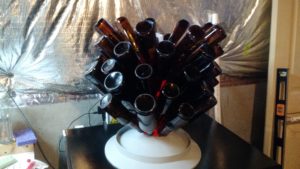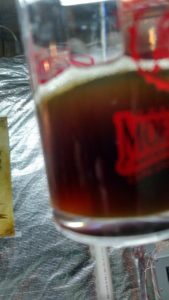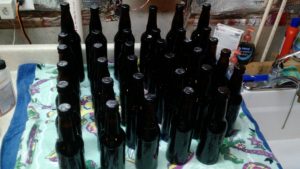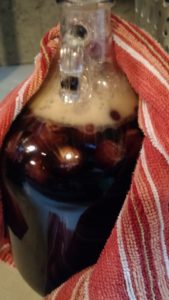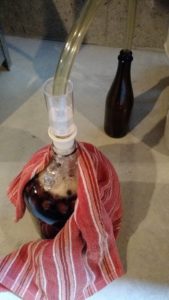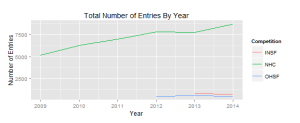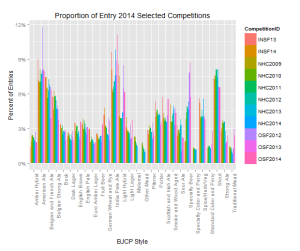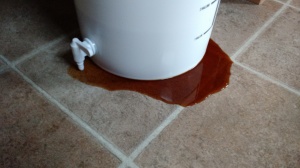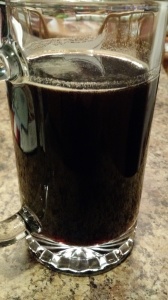Tag Archive: stout
Bottling N’ Stuff – Cream Stout
As much as I was hoping to make this my first kegged beer, I haven’t actually purchased any kegs and my keezer is currently in use as a freezer. Since I was given a $25 Amazon gift card, I decided to make my life a little easier in bottling with one of those bottle trees.
I have some pictures of the brew day and was intending to write that blog post before this one, but there is a lot more that is going to go into that, so things will just have to be out of order. Regardless of that, first taste of this will likely be on 11/21. And I’m really looking forward to it.
Cheers!
Looking at Beer Competitions
I looked into a few homebrewing competitions. I think I mostly wanted to look at how big the categories are.
Data
The data I found is from the National Homebrewing Competition, the Indiana State Fair, and the Ohio State Fair. Only partial datasets were used from the state fairs, because not all the data I need is on their websites. This data is far from perfect, but I think the conclusions I make below are still valid.
Growth
As shown above, there has been a lot of growth in the National Homebrew Competition. From 2009 to 2012, it grew by 50% and by 2014 it grew even more. The states did not show any growth. We’re in a golden age of homebrewing where the Internet helps new homebrewers along, a craft beer surge that shows everyone that not all beer is a Light American Lager. I think this has helped increase the NHC.
Bud’s crack on craft brewing will likely help homebrewing as well as craft beer. After all, 44% of drinkers age 21-27 have never tasted it. Not sure if they’ve had a craft beer either, though (they could be wine or whiskey drinkers).
Styles
I visually looked through to see the top five and bottom five. I didn’t do any actual analysis other than that.
Top 5: American Ale, IPA, Stout, Belgian and French, and Belgian Strong
It is probably expected that American Ales and IPAs would be big styles. I think a lot of people that ‘stick their foot in’ to craft beer start with amber or pale ales and probably soon make it to IPAs. After being in the hobby for 6 months, I’m not shocked to see strong numbers from Stout – it seems like the non-hop-head craft beer lovers gravitate towards good stouts. Also, Stout allows for some flexibility with ingredients without becoming something not-beer. I’m also not shocked to see Belgian and French, and Belgian Strong classes represented well, as many of the homebrewers I know have a profound interest in those two classes (specifically in saisons, tripels, and quadrupels).
Bottom 5: Amber Hybrid, Strong Ale, Sour Ale, Euro Amber Lager, and Dark Lager
Amber Hybrid (which includes Northern German Altbier, Dusseldorf Altbier, and California Common) is one I would have expected to be higher, although that is mostly because of the California Common style. BYO Magazine recently did a feature article on this, perhaps we’ll see some growth there. As far as altbier, I’m not sure my three local bottle shops have any altbier that would be within these styles. I don’t know about others, but I’d sure be apprehensive of brewing a style I’ve never tasted.
Strong Ale was a little shocking. I expected more people to use barleywine to show off malt selection.
I didn’t think it was shocking that sour ale was among the bottom, but maybe that’s because I find them intimidating from the brewing standpoint.
I was shocked to see both the Euro Amber Lager and Dark Lager among the bottom five. These two style groups include some of my favorites in the lager kingdom, Oktoberfest and Schwarzbier.
From my point of view on one of the hills east of Cincinnati, though, I am partially not shocked about all but one of the bottom 5 being lagers. According to the temperature on my ale pail, fermentation holds around 64-66 degrees (Fahrenheit, 18-19 Celcius) in my basement with no temperature control. Perfect for ales, not so much for lagers. I eventually will brew some lagers, but I have to have better temperature control first.
An interesting contrast in the styles is the light hybrid group. Apparently this is pretty common in the midwest, but not nationally – it’s pretty low for NHC, but pretty high for both the state fairs. This includes cream ale, blonde ale, Kolsch, and american wheat or rye. My only guess here is that we have a local soft spot for Little King’s Cream Ale.
Growth and Losses
I looked at this by looking at the slope of the trend based on the NHC data.
The biggest growth style classes are IPA, American Ale, Stout, Belgian and French Ale, and Spice, Herb, and Vegetable Beer. I don’t find any of these shocking except the spice, herb, and vegetable class.
The losing classes are all meads. I’m not sure what to think of that. On one hand, it isn’t uncommon to find a homebrewer that is at least interested in fermenting mead. On the other hand, good honey is incredibly expensive, and that may factor into things.
The not-really-growing classes are Pilsner, Specialty Cider & Perry, German Wheat & Rye, Light Lager, and Standard Cider & Perry. Regarding cider and light lager, I’m not shocked. While I don’t think the hobby is bent against ciders, perries, and light lagers, I think there is a segment of beer drinkers that look on those three groups as being inferior. I don’t agree with them (and I have a cider experiment going on in the basement now), but I think it exists.
That leaves Pilsner and German Wheat & Rye as the odd men out. I’m not sure why, as every beer geek worth his (or her) glass knows that Pilsner is different from Light Lager (and generally regarded as far better). Perhaps it has to do with the difficulty in water chemistry and fermenting. Regarding German Wheat and Rye, I don’t know. It’s not among my favorite styles, but that doesn’t really mean anything to others.
So What’s This All Mean?
Nothing. Nada. Jack Shit. I’m a data geek in real life and wanted to look into this. Awards don’t matter, your taste does. Brew what you like, because if you come in from work and look forward to opening another homebrew, you’re doin’ it right.
…but I understand if you still want to win an award (I do). It’s kinda like getting a medal at the end of a (running) race. The medal symbolizes the work that went into training for that event. Similarly, a beer award symbolizes the work put into formulating and executing a recipe.
Cheers!
Charlie Is Right. RDWHAHB.
The words of Charlie Papazian in his book, The Complete Joy of Homebrewing (if you don’t own it, click that link and buy it, help support my site!) ring out on nearly every beer forum anywhere. It’s hard to follow the advice sometimes, but that doesn’t change that the advice is good.
My last brew is one that was… interesting. It was my first all-grain brew, and it was big. I also messed up a few places, I forgot to add the lactose until into the boil. I didn’t get the yield I wanted (and didn’t sparge to get it, even though I should have). My OG was high.
Fermentation was interesting, too. I split the batches, which resulted in about 2.25 gal (8.5 l) of wort once boil was over. I used Wyeast 1968, with a starter, which may have gone according to plan. I fermented one in a carboy and one in a bucket. The carboy bubbled and bubbled. In fact, I let it ferment an extra week because of how bubbly it was! Even with the FG settled at 1.034 (readings taken over a week apart, not just 3 days), it was still bubbling like it was fermenting. The bucket didn’t start bubbling at all. At one point I thought maybe it needed to be aerated and I shook (sort of) the bucket. It bubbled then (and only then) and so much so it pushed all the sanitizer out of the airlock. It’s FG settled to nearly the same as the carboy.
I will admit, I was worrying. The samples were a little thick and too sweet. I don’t care much for sweet beers. Two nights before bottling, I added a shot of vanilla tincture to one. The night before bottling, I added around 8oz of cold coffee to the other. I bottled them on the day before Thanksgiving, not without a minor issue.
I try- but never succeed- in giving beers a full two weeks of bottle conditioning. I put one of each batch in the fridge 10 days after bottling, and cracked one open as a nightcap after one of my kids’ birthday party. It was the vanilla, affectionately known as E=1/2mvStout (yes, I’m an engineer). I was still concerned that it would be thick, sweet, and not good.
I was wrong!
It was good. The vanilla was not as strong as I wanted (but perhaps I could have that as a play on the ‘1/2’ in the kinetic energy formula). The head is not what I wanted, but it’s a starting point, and a damn good one.
So the next evening I tried the coffee one, E=MCStout. I was concerned all along that the coffee flavor could overpower this one, as I have had coffee stout beers that were just too powerful with the coffee. At this point, though, I knew it was at least a 3.5 star beer, so I was less apprehensive about trying it.
It was better. Better than the vanilla stout.
The moral of the story: Mr. Papazian is right. Relax, don’t worry. Have a homebrew.
Prost!
